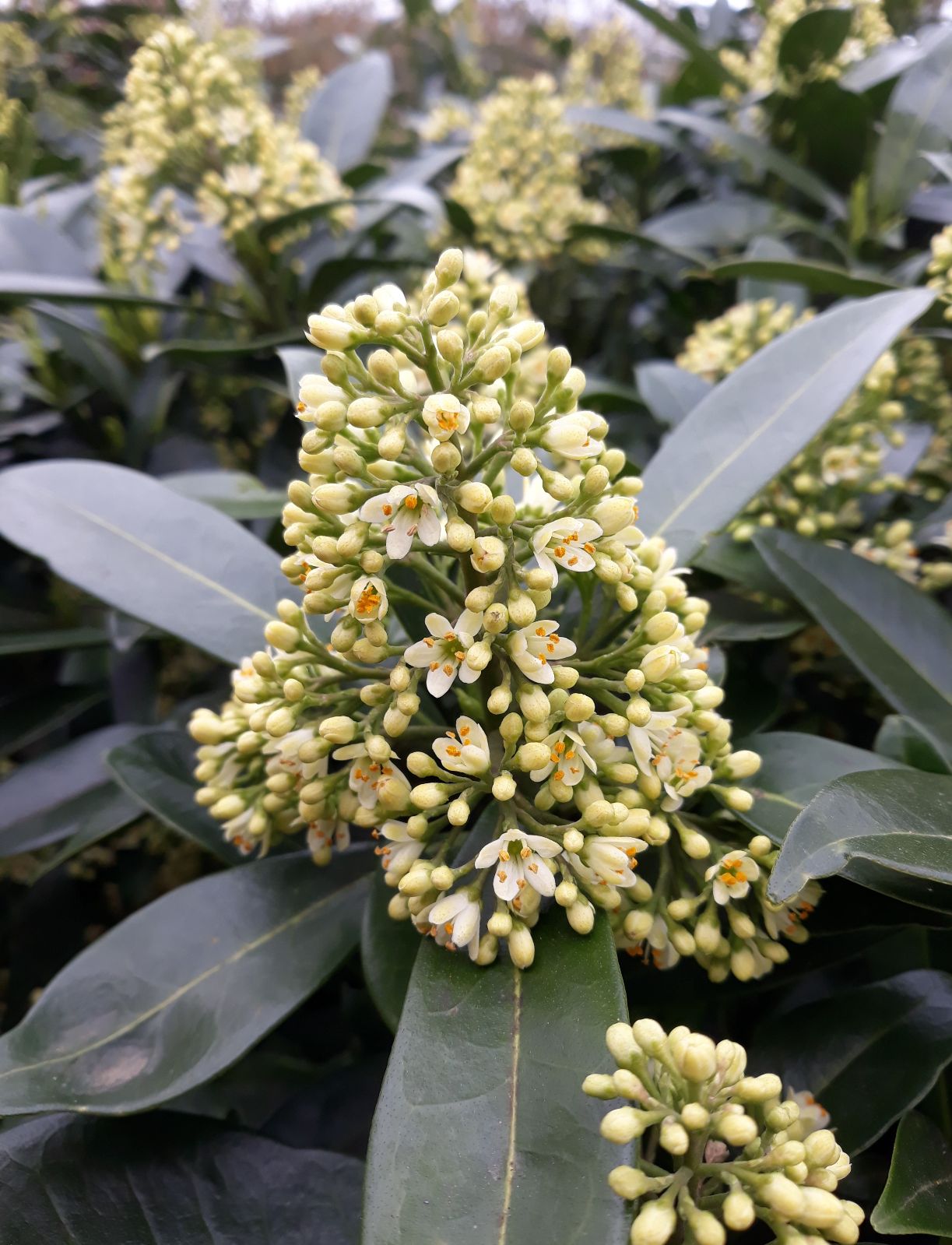Skimmia
Credits
Article from Bean's Trees and Shrubs Hardy in the British Isles
Recommended citation
'Skimmia' from the website Trees and Shrubs Online (treesandshrubsonline.
Family
- Rutaceae
There are only half a dozen or so species in this genus, all evergreen shrubs or small trees, natives of the Himalaya and E. Asia. Leaves alternate, simple, entire, aromatic, dotted with pellucid glands. Flowers small, white or yellow, sometimes tinged with pink, normally unisexual and borne on different plants, arranged in short terminal compound panicles. Sepals, petals and stamens four or five. Carpels connate, two to five. Style short, its stigma obscurely two- to five-lobed. Fruit a drupe, red or black, with two to five stones.
The fruits are the most attractive feature of this genus, or rather of the red-fruited species grown in gardens, but to obtain these from S. japonica or S. anquetilia it is necessary to plant the two sexes together. But male plants have more numerous flowers in the inflorescence than the females, and are consequently more ornamental and fragrant in spring than the females. If there is room for only one plant it should be a male, or S. reevesiana.
The editor is greatly obliged to Mr Nigel Taylor of the Kew Herbarium for his assistance in the matter of S. anquetilia, S. laureola and S. multinervia, and for his helpful comments on the text as originally drafted.
The skimmias are of easy cultivation and like a good, moist soil; they will thrive and flower well in a moderately shady spot. Those who make a speciality of growing skimmias for their fruits assist fertilisation by artificial means (see under S. japonica).
The generic name derives from the Japanese ‘Miyama-Shikimi’ (‘Hill or Wild Shikimi’ – this word without qualification being the vernacular name for Illicium religiosum).
All the skimmias can be propagated by cuttings of half-ripe shoots, and this method is of course essential for the perpetuation of the named sorts. S. reevesiana may be propagated by seeds and this method can also be used for the other species, with the drawback that the sex of the seedlings will not be known until they flower.
From the Supplement (Vol.V)
An admirable account of the cultivated skimmias by P. D. Brown of the University Botanic Garden, Leicester, will be found in The Plantsman, Vol. 1(4), pp. 224–49 (1980). This contains useful notes on planting, cultivation, berry-production and propagation, as well as descriptions of some rare or new cultivars which will shortly become available in commerce. A report on a trial of skimmias held at Boskoop, by H. van de Laar, appeared in Dendroflora No. 21 (1984) and in this, too, some new cultivar-names were published.


